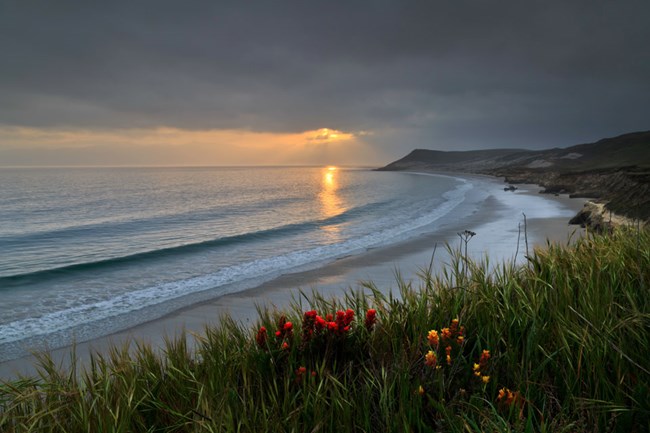
Spring | Summer | Fall | Winter Although the park is located in "sunny" southern California, we actually do have seasons here. While the seasonal changes are nothing like one would find in Minnesota, there are differences that visitors should take into consideration when visiting the park. Each season has its own character and casts a unique mood over the islands. In addition, visitors also should be aware that ocean and weather conditions vary considerably from day-to-day and island-to-island. Although this makes planning your visit a little difficult, we must remember that this unpredictable and, at times, unforgiving weather is one of the main reasons that the islands have been afforded so much isolation and protection from the rapid changes seen on the mainland. It is, in part, what makes the Channel Islands such a unique and wonderful place. We encourage you to take the opportunity to fully enjoy the islands throughout the entire year. Channel Islands National Park is truly a place for all seasons. In general, the islands have a Mediterranean climate year-round. Temperatures are relatively stable, with highs averaging in the mid-60s (°F) and lows in the low-50s. However, visitors to the islands must be prepared for high winds, fog, rough seas, and sea spray at any time. Winds are often calm in the early morning and increase during the afternoon. High winds may occur regardless of the forecast, especially on the outer islands, Santa Rosa and San Miguel (30-knot winds are not unusual). Anacapa, eastern Santa Cruz, and Santa Barbara Islands have more moderate winds. Dense fog is common during the late spring and early summer months, but may occur at any time. Ocean water temperatures range from the lower 50s (°F) in the winter to the upper 60s in the fall. Due to this weather variation, visitors to the islands should dress in layers, with short and long pants, fleece jacket or sweatshirt, windbreaker, hat, sunscreen, and waterproof outer clothing. In addition, visitors should wear sturdy hiking shoes with non-slip soles. Spring Summer Fall Winter |
Last updated: May 23, 2018
